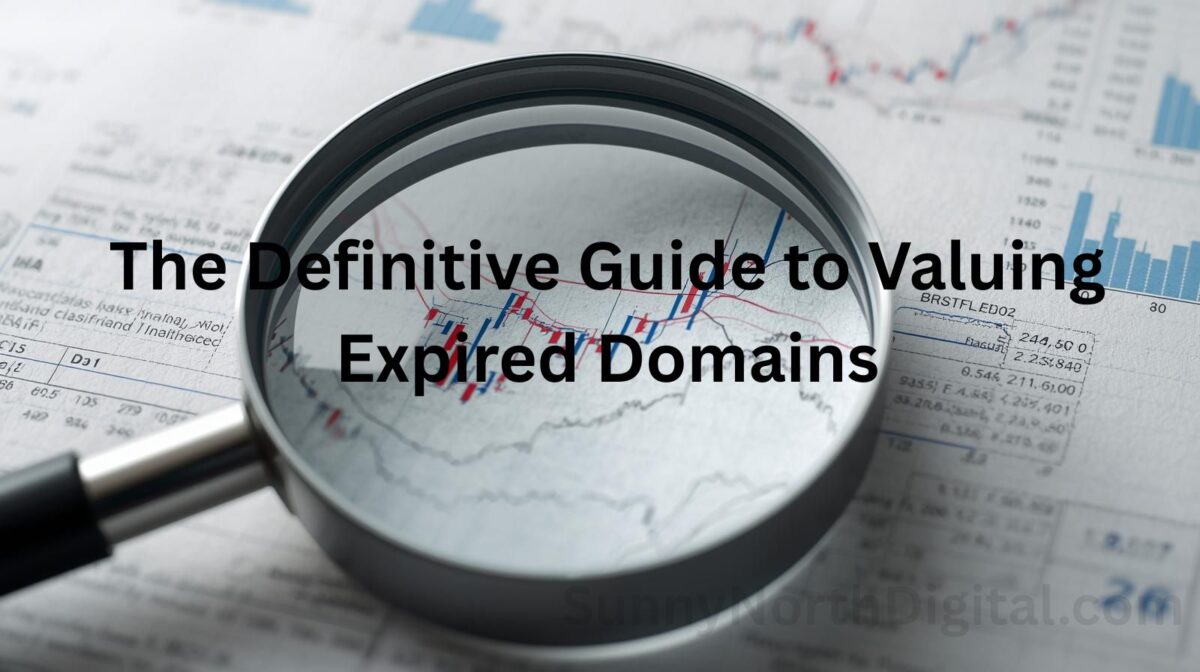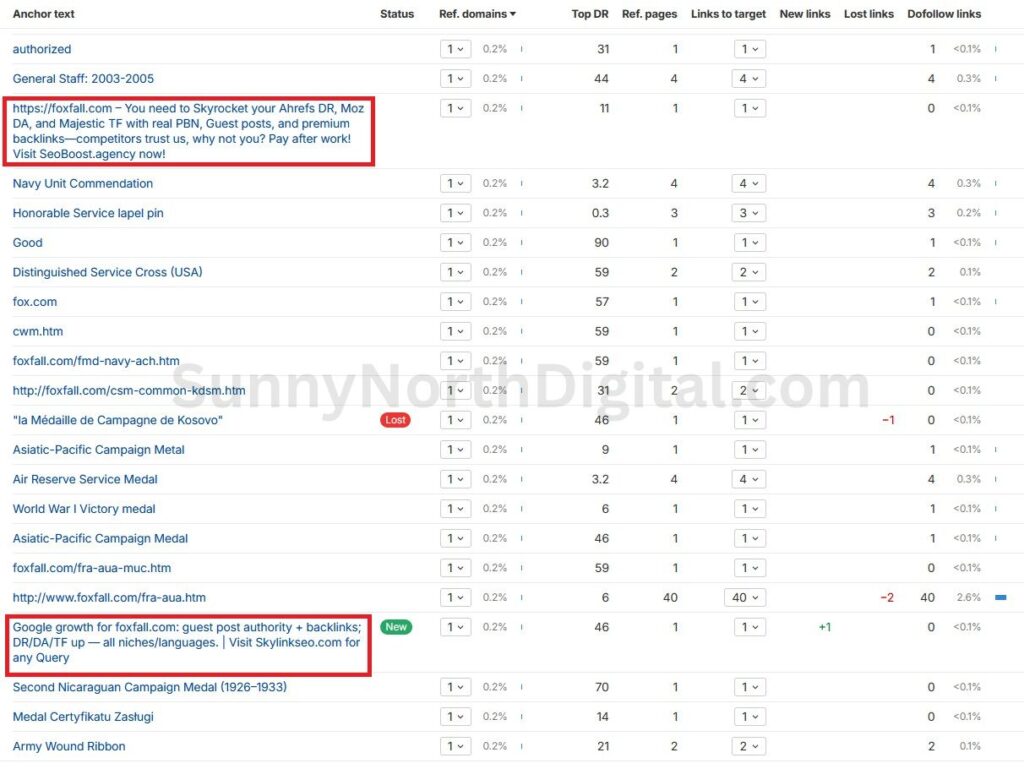The Definitive Guide to Valuing Expired Domains (A Live Case Study)

Ever stared at an auction on GoDaddy—or one of the other best domain auction sites—with the countdown timer ticking, wondering how to value an expired domain? You’re not alone.
It’s a key step in the profitable business of domain flipping, where investors buy and sell digital real estate. If you’re new to the concept entirely, I recommend starting with that foundational guide first. For everyone else, let’s dive into the deep analysis.
The difference between acquiring a six-figure digital asset and a worthless, penalized domain often comes down to a thorough analysis.
In this guide, I’m not just going to give you theory. I’m going to pull back the curtain on my exact, step-by-step process for checking expired domain history by performing a live audit on foxfall.com.
But before you can analyze a domain, you need a process for finding ones that are even worth your time. For that, you’ll want my beginner’s search checklist for finding profitable domains.
By the end, you’ll have a professional framework that answers the question of what to look for when buying a domain so you can protect your investments.
Is Buying an Expired Domain Worth It? The Risks vs. Rewards
For a beginner, the first question is always, “is domain flipping profitable in 2026?” The honest answer is yes, but only if you know what you’re doing.
The primary benefit of buying expired domains is the SEO head start. Acquiring a domain with an existing, high-quality backlink profile can save you months or even years of authority-building work.
Finding one of these high value expired domains means your new content can rank faster and punch above its weight from day one. This is where the real expired domain profit potential lies.
However, the potential reward is matched by significant risk. The internet is a graveyard of abandoned websites, and many of them are worthless.
The biggest danger is unintentionally buying a domain with a toxic, spammy history or one that has been penalized by Google. This is the biggest pitfall for new investors.
That’s why I created a separate, in-depth 5-step checklist for how to spot a penalized or spammy domain.
Without a proper expired domain appraisal, you could waste thousands of dollars on an asset that will never rank.
Many new investors rely on free automated tools for this, but are those free domain appraisals accurate? I did a case study on that exact topic.
Understanding how to manually differentiate the gems from the junk is the most critical skill for any domain investor.
My 4-Pillar Framework for a Professional Domain Audit
With so many factors to consider for expired domains, how do you create a repeatable and reliable process?
Over the years, I’ve refined my various domain valuation methods down to a simple 4-Pillar Framework.
This framework focuses on key metrics for expired domain valuation and other quality indicators.
If you’re new to concepts like DR, DA, or anchor text, I recommend keeping my complete glossary of domaining & SEO terms open as a reference while you read. It’s a foundational resource that will give you the vocabulary to analyze domains with confidence.
We’ll go through each pillar using our foxfall.com case study:
- The 30-Second Gut Check (Top-Line Metrics)
- The Backlink Profile (The Domain’s DNA)
- Historical Performance (The Ghost in the Machine)
- Strategic Opportunity (The Future Value)
Live Case Study: Auditing foxfall.com with Ahrefs
Theory is great, but a real-world example is better. Now, let’s put our 4-Pillar Framework into action.
I’ll walk you through how to use Ahrefs to check a domain by performing a complete aged domain analysis on foxfall.com.
We’ll cover everything from the initial expired domain traffic assessment to a deep-dive expired domain backlinks evaluation, showing you exactly what professionals look for.
The 30-Second Gut Check: Analyzing Top-Line Metrics
Let’s start with the basics. The first thing I do when looking at a new domain is pull the top-line metrics from the Ahrefs Site Explorer overview.

My initial reaction to this is intrigue. A Domain Rating (DR) of 16 is modest, but the fact that it has 297 referring domains is interesting. It’s not a powerhouse, but it’s clearly not a brand new site either. This tells me it’s worth a deeper look.
The Backlink Profile (The Domain’s DNA)
A domain’s value is in its links. This is where we spend the most time, digging into the quality of its backlink profile.
Link Quality: Finding the “Trophy Links”
First, I always hunt for “trophy links”—high-quality, authoritative endorsements that signal trust to Google. For foxfall.com, I found some incredible gems:

A link from Wikipedia (DR 94), even when “nofollow,” is a massive trust signal. Its presence as a citation on a page about the “Commendation Medal” tells Google that foxfall.com was once considered a trusted, expert resource on this topic. This type of link is almost impossible to get for a new site and adds significant topical trust.
Next, I look for niche relevance. I was excited to find this link:

This link from the Destroyer History Foundation (DR 46) is a perfect example of a topically relevant backlink. A link from a respected, dedicated history website acts as a strong endorsement within the niche, reinforcing the domain’s Expertise, Authoritativeness, and Trustworthiness (E-E-A-T).
Anchor Text: A Tale of Two Strategies
Next, I analyze the anchor text to check for spam. The profile for foxfall.com was a classic “tale of two cities,” revealing a split personality in its history.

On one hand, the profile is fantastic. Over 31% of its anchors are branded (foxfall, foxfall.com), and a large portion are natural, descriptive keywords like “Marine Corps Brevet Medal”. This is a clear sign that most of the site’s good links were earned editorially because of its high-quality content.
On the other hand, I found clear evidence of low-quality link building. Spammy anchors like “Increase your site’s backlinks… Visit BuySeoLink.com” are a major red flag, indicating that someone tried to manipulate the site’s rankings with spam tactics.
Historical Performance (The Ghost in the Machine)
A domain’s traffic graph tells a story. For foxfall.com, the story is concerning.

As you can see, the site’s traffic flatlined to zero in mid-2020 and stayed dead for four years. A complete drop to zero like this is a major red flag. In my experience, this is more indicative of the domain expiring or being taken offline than a standard Google penalty, which usually just suppresses traffic.
The tiny, unstable blip in traffic recently is not a sign of a healthy recovery; it’s what you often see when an expired domain is periodically re-crawled.
Based on this, and the spammy links we found, my final risk assessment is moderate to high. Any new owner would need to perform a significant cleanup, including submitting a disavow file to Google, with no guarantee of success.
Strategic Opportunity
Even with all these red flags, the final step is to ask: is there any hidden value? For foxfall.com, the answer is yes, and it lies in one powerful concept: topical relevance.
Despite the spam, the core of this domain’s backlink profile is built on high-quality links from authoritative sites about a very specific topic: U.S. military medals and history. This has established a strong thematic foundation.
For a new owner willing to undertake the significant cleanup required, new content focused on this niche would likely rank much faster than it would on a brand-new domain, as Google already associates foxfall.com with this subject.
Your Next Step: From Valuation to Monetization
Successfully valuing a domain is the most important step in protecting your investment. Once you’ve used this 4-Pillar Framework to find a high-quality, clean domain, the next phase is turning it into a profitable asset.
To learn how, read my follow-up guide on the 5 proven ways to monetize an expired domain, from a quick flip to building a passive income site.